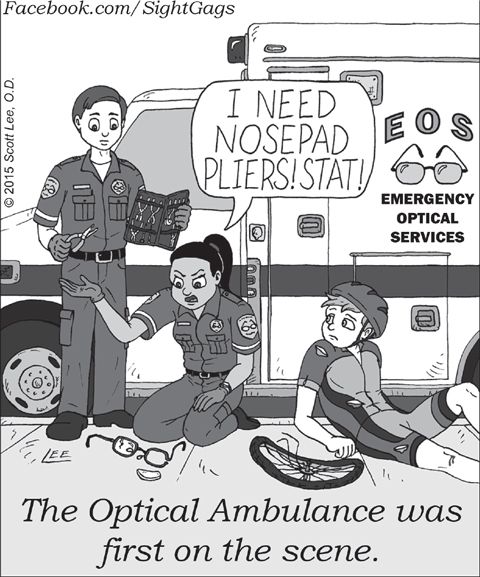An Idea Whose Time Has Come
To quote the February edition’s Outlook column, “Friends in Low Places” (an editorial piece that looked at the low vision subspecialty), yes, “you might think that efforts to help the visually impaired would be an integral part of all optometric offices,” but, we’re finding that’s not the case.
The culture of eye care is: diagnosis, treatment and prevention of vision loss. However, once patients have lost significant vision, they are basically abandoned by eye doctors. As a low vision diplomate for more than 25 years and former clinical director of New York Lighthouse Upstate Clinics, I have heard thousands of low vision patients ask, “Why didn’t my eye doctor tell me about low vision?”
Unfortunately, we are teaching our doctors to say, “Nothing more can be done.” At a recent optometric conference, one of the lecturers summed up a presentation of a macular edema case by stating, “We got the patient to 20/80 but that was all we could do.” To which I emphatically retort: No, it isn’t! In a private conversation with the speaker after the presentation, he told me he refers to low vision all the time. Saying it in private is not enough—it must be said in front of an audience of ODs, over and over again!
Your editorial was wonderful, but it is not enough to change the culture. The leaders in eye care need to teach why, when and how to refer to low vision. It must be taught in CE courses, in optometry schools, in journals and magazines and anywhere else eye doctors get together. We need to use one and two hour CE courses to teach doctors the benefits of low vision referring. Low vision is a subspecialty that requires substantial time and commitment to learn. The organizers of the event mentioned above have since promised to add low vision to future programs. That’s a great start toward changing the culture.
As founder of the International Academy of Low Vision Specialists, I’m pleased to note that we have 35 highly trained low vision optometrists located throughout the United States and Canada ready to present a one-hour COPE approved CE course called “Transforming the Phrase, ‘Nothing More Can Be Done’” to teach ODs why, when and how to refer. I sent a request to present this course to every optometric CE administrator in the United States for the past two years. Not one has scheduled it.
Review of Optometry publishes a Conference Planner each year listing over 200 CE events. Look at the 2016 planner and you can count the number of low vision CE hours being offered on one hand.
There’s a former real estate salesman in Los Angeles advertising low vision services. He bought a truck, filled it with magnifiers and CCTVs and drives to the homes of people with low vision. Low vision patients are that desperate for care.
I have declared low vision an ‘idea whose time has come.’ Any help you can provide will be greatly appreciated.
—Richard J. Shuldiner, OD, FAAO
Low Vision Diplomate, American Academy of Optometry; Founder, International Academy of Low Vision Specialists; Clinical director, Low Vision
Optometry of Southern California
 |
| Sight Gags By Scott Lee, OD. |

